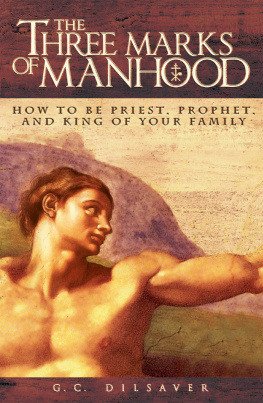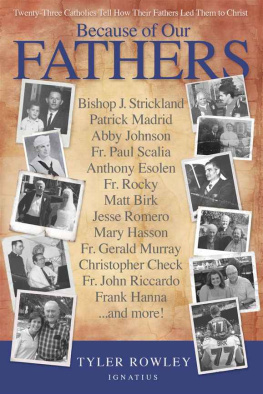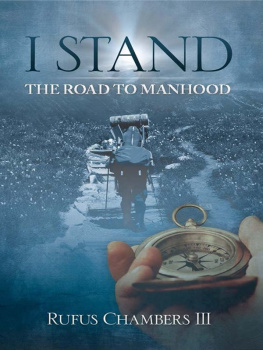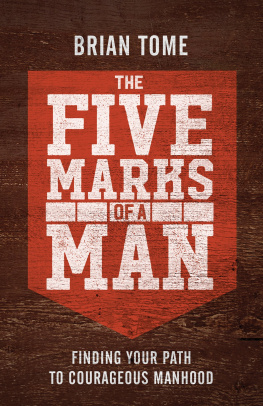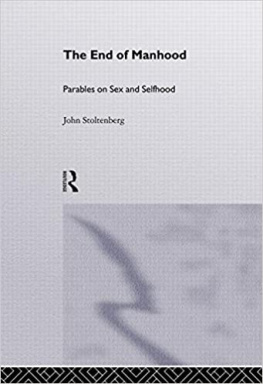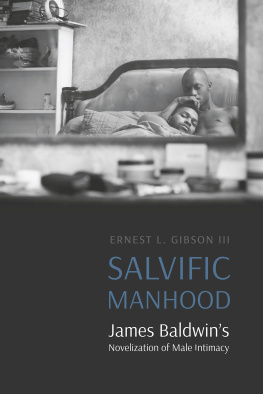T HE T HREE M ARKS
OF M ANHOOD
T HE T HREE M ARKS
OF M ANHOOD
How to Be Priest, Prophet,
and King of Your Family
G. C. Dilsaver
TAN Books
Charlotte, North Carolina
Copyright 2010 G. C. Dilsaver
All rights reserved. With the exception of short excerpts used in articles and critical reviews, no part of this work may be reproduced, transmitted, or stored in any form whatsoever, printed or electronic, without the prior written permission of the publisher.
ISBN: 9780895559739; 0895559730
Cover design by Tony Pro.
Cover image: Sistine Chapel Ceiling (1508-12): The Creation of Adam, 1511-12 (fresco) (post restoration) by Michelangelo Buonarroti (1475-1564). Vatican Museums and Galleries, Vatican City, Italy/The Bridgeman Art Library.
Printed and bound in the United States of America.
TAN Books
Charlotte, North Carolina
2010
C ONTENTS
T HE C HRISTIAN FAMILY is a patriarchal hierarchy. So teaches the Catholic Church in Scripture, in the Roman Catechism, and in modern encyclicals. As a patriarchal hierarchy it reflects the hierarchy of the Church; it also reflects the hierarchy of divine government itself, which is manifest not only in Gods rule over His creation, but in the relationships of the Trinity, whose absolute unity derives from the subordination of the Son to the Father.
Why, then, is this teaching such a hard saying for modern ears? Even among orthodox Catholics, the mention of Christian patriarchy is liable to elicit some negative reaction. To begin with, the very term patriarchy has been turned into a pejorative by todays manipulators of language and enforcers of political correctness. Contemporary liberal societys espousal of the ideology of hyper-egalitarianism saturates every facet of the secular realm. With this ideology promulgated by the schools, the mass media, the corporations, and the state, it is in the very air we breathe. One cannot help but be swayed by such an all-pervasive propagandizing.
And it is modern feminism that is hyper-egalitarianisms banner issue. Used by the state as fulcrum against the unacceptable non-governmental authority of the family, it is a powerful and pernicious movement indeed. For what other movement has won the right, the societal approbation, to murder at will? A feminist disposition, its spirit and politics, has become an essential requirement for those who seek to function in secular society. And feminisms greatest foe, its very antithesis, is patriarchy.
The hard saying of patriarchy is more painful still in that it touches on the specific sore spot of our time: the dissolution of the traditional family. It is characteristic of lay Catholics of a traditional or conservative bent to be ever in search of an explanatory analysis of what went wrong with society and the Church. Most of the explanations they find, valid as they may be, are in areas out of their influence or competency, such as liturgical or ecclesiological issues. Hence it is also characteristic of such Catholics to feel a deep frustration. But there is one area that the laity have full competency to reform and make as Catholic as they wish, and this area is the key to all the other besetting problems. It is the family. Order the home and the rest will follow. And the perennialand definitively Catholicorder of the home is that of patriarchy.
Wives are to be submissive and obedient to their husbands, loving and honoring them second only to God alone. Husbands are to be uniquely devoted to their wives, loving them more than their very selves and giving their lives for them as Christ did for the Church. These tasks are difficult, but achievable with Gods grace, which is made available through Holy Matrimony and the other sacraments.
As His Holiness Pope John Paul II often pointed out, there have been abuses of the male prerogative that have remained even in Christian cultures. This is not surprising, since such abuses are part and parcel of fallen, sinful human nature. To the degree that such abuses prevail, a true Christian patriarchy is not present. For although a sinful act often superficially resembles a virtuous one (for instance, an illicit sexual act and the marital act), that resemblance does not redound on the virtuous act. In the same manner, the presence of worldly structures of brute and self-seeking domination should not sully, but should rather contrastingly accent, the honor and splendor of a Christian patriarchy characterized by loving service and sacrificial leadership.
Note well that the call to Christian patriarchy is a call to service and love rather than selfishness and arrogance; thus it is a call that in more ways than one is contrary to modern sensibilities. The authentic Christian patriarch must constantly die to himself, that is, constantly do violence to his pride and self-love:
The following pages maintain that today is the day for the advent of a new Christian patriarchy: a patriarchy deriving solely from Christs own kingship. Because of the grave familial crisis of the time, such a patriarchy must necessarily be strong and pure. Indeed, in light of the critically debilitated state of Western manhood today such a patriarchy is necessarily miraculous. It is hoped that this book, in spite of its inadequacies and by Gods grace, will clearly and compellingly issue the challenge and call to Christian patriarchy. For if Catholic men do not begin to answer this divine call of our age, there will be no essential rejuvenation of the family or restoration of the Church; that is, there will be no possibility for the advent of a new Christendom.
The doctrinal kernel of this manuscript (found in ), began to be developed while I was in the final stages of my graduate studies at the John Paul II Pontifical Institute for Studies on Marriage and Family. At the time, the faculty afforded me the singular opportunity to present a lecture on the patriarchal hierarchy of the family. In this lecture I asserted that the patriarchal hierarchy of the family was a constant and still-applicable teaching of the Church that is tantamount to an infallible teaching of the ordinary Magisterium. This assertion was not then, nor has it been since, doctrinally refuted.
.
The terms pride and self-love are used... somewhat interchangeably, for they are part and parcel of each other. Pride entails turning away from God to turn toward selfboth apostasy and selfishness. This selfishness entails the seeking of ones own temporal pleasure, which is called cupidity. All vice springs from pride and self-love or cupidity. Dilsaver, G. C. (2008). Imago Dei Psychotherapy, p. 108.
Eph. 5:25.
This death to self essentially entails a dying to the pseudo-self that comprises pride and self-love and their ensuing personality defenses. Dilsaver, G. C. (2008). Imago Dei Psychotherapy, p. 105, 183.
D ARK TIMES, arguably the darkest of times in the annals of Christianity, have descended on both Faith and family at the eclipsed dawn of the twenty-first century. A full-blown spiritual plague now rampages through the West and beyond. Pernicious and highly infectious, this plague is promulgated by governmental policies and commercial interests, and its pathogens ride the ubiquitous airwaves of the mass media and incubate in the passive minds of modern men.
This plague symptomatically erupts in materialism, hedonism, consumerism, and the myriad of personal sins. It is more lethal than any of Christianitys ancient heathen antagonists, for this new plague was cultivated over the centuries in the very matrix of Christianity, thereby mutating into a virulent strain that both mimics and resists the Gospel. Indeed, its proliferation is fueled by compromising and debilitating the body of Christ.

